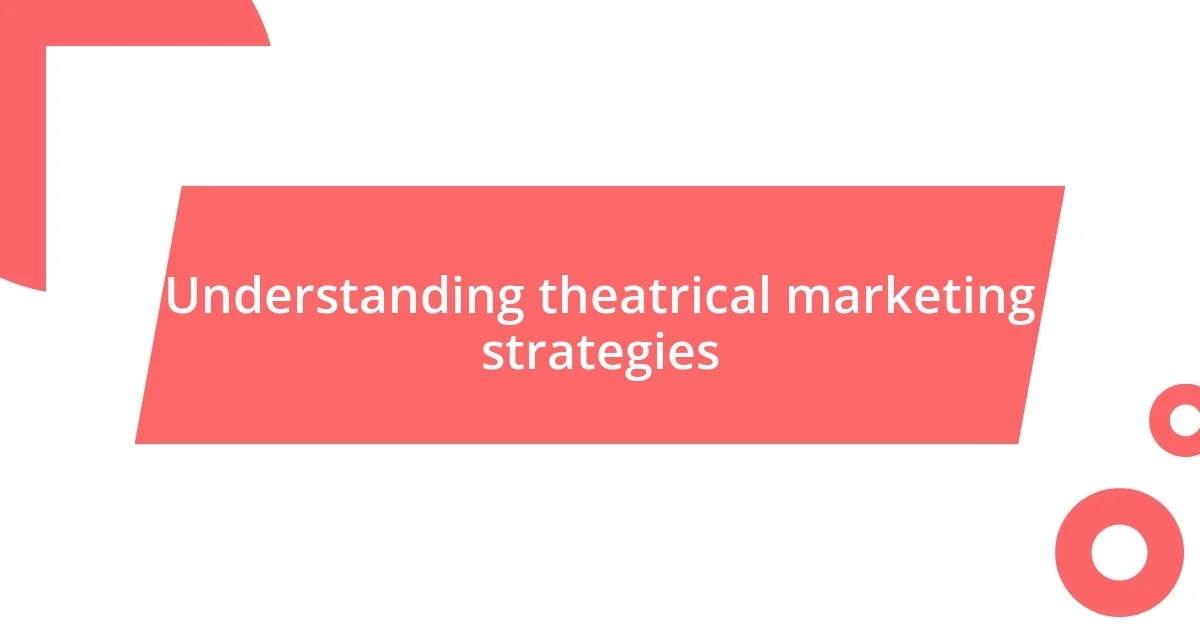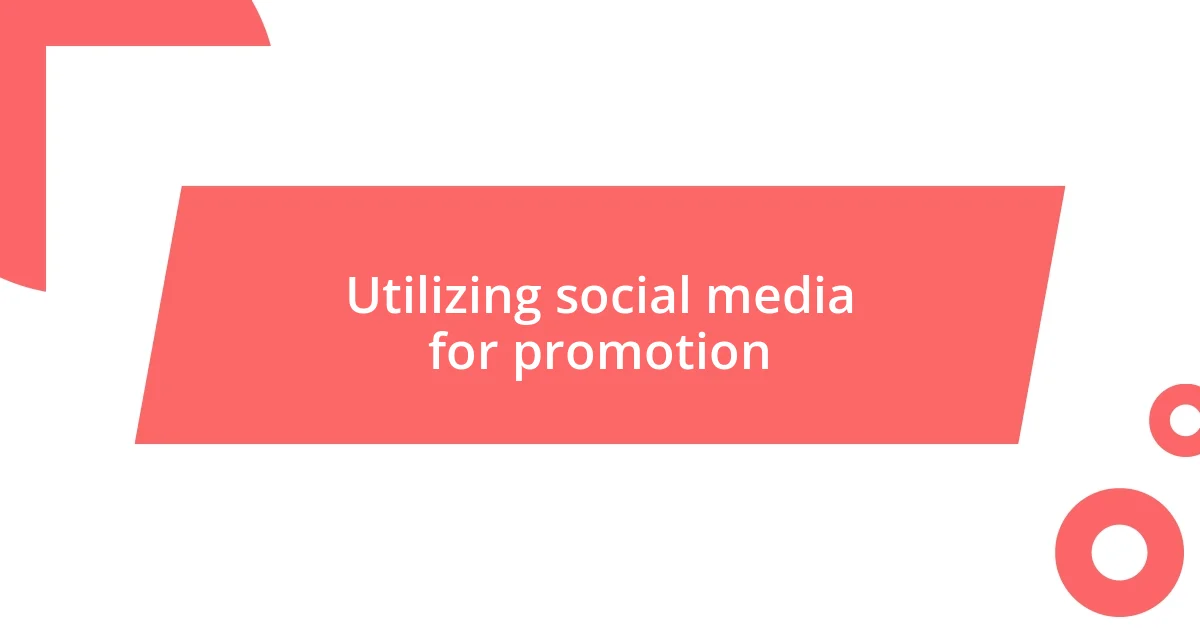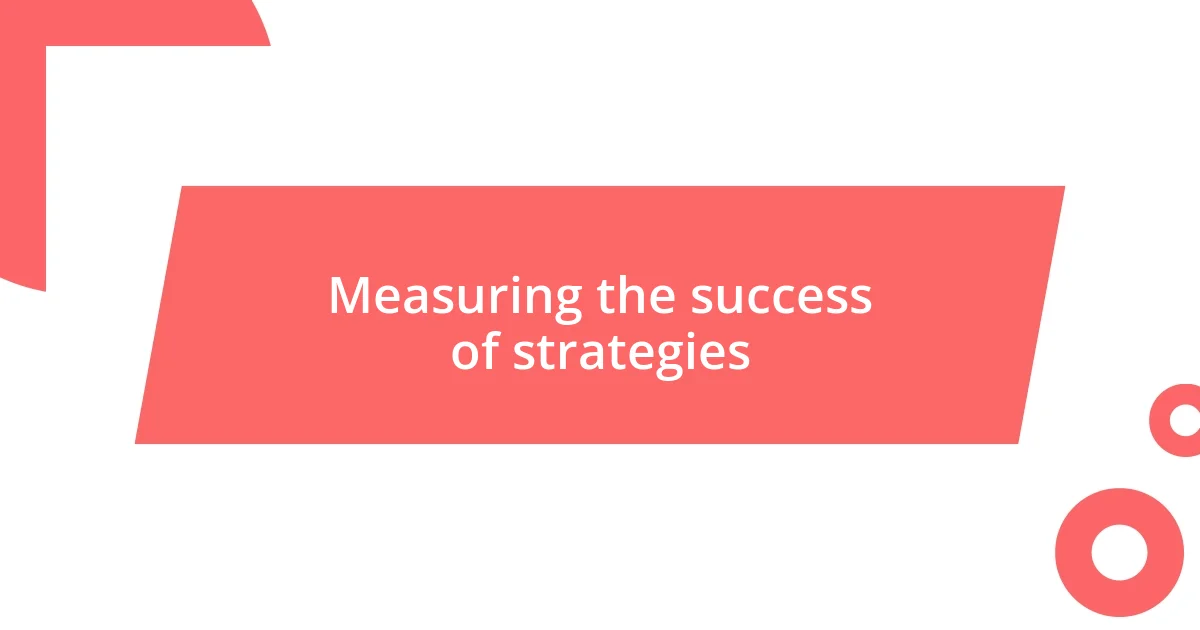Key takeaways:
- Theatrical marketing relies heavily on storytelling, audience targeting, and experiential marketing to build anticipation and engagement before a film’s release.
- Utilizing social media effectively fosters community and interaction through strategies like influencer collaborations, interactive content, and user-generated contributions, enhancing word-of-mouth marketing.
- Adapting marketing strategies based on feedback and audience sentiment is crucial for optimizing campaigns and connecting with viewers, as demonstrated through real-time adjustments and post-release surveys.

Understanding theatrical marketing strategies
Theatrical marketing strategies are the backbone of how a film captures its audience before it even hits the screen. I remember the buzz around a particular movie release, driven not just by trailers but by clever social media campaigns that made me feel a part of something exciting. Have you ever followed a film’s journey on social platforms and felt your anticipation build? That’s the power of strategic marketing at work.
When I think about theatrical marketing, I can’t help but reflect on the importance of storytelling in campaigns. It’s fascinating how studios create narratives around their films, often revealing just enough to draw us in while keeping crucial elements under wraps. This creates a sense of intrigue and connection—something that’s vital for engaging potential viewers. I’ve found myself eagerly sharing these narratives with friends, igniting discussions and speculation long before release day.
In my experience, integrating experiential marketing—like sneak peeks or exclusive events—often transforms the way I perceive a film. These hands-on experiences evoke excitement and foster community; they not only promote the film but create lasting memories. Have you ever attended a special screening or event for a movie? It’s those moments that make theatrical marketing more than just an advertisement; they become a shared experience that enhances the overall cinematic journey.

Importance of audience targeting
The precision of audience targeting in theatrical marketing cannot be overstated. When I recall a specific blockbuster that hit home for me, it was evident how much the marketing campaigns were tailored towards demographics like my age group. This experience brought along a sense of belonging; I felt like the film was made just for people like me. There’s immense value in understanding who your audience is, which helps filmmakers connect more authentically and drive engagement.
It’s fascinating to see how data plays a role in sculpting these strategies. I remember attending a film festival where diverse genres were marketed to distinct crowds. One trailer was aimed at families, showcasing lighthearted moments that resonated with parents, while another was tailored for teens, featuring a more energetic vibe. The excitement in the air was palpable as each audience responded differently. This diversity of targeting illustrates how effectively audience segmentation can amplify a film’s reach and impact.
Moreover, word-of-mouth can skyrocket when audiences feel engaged and represented. After watching a film that deeply resonated with my personal experiences, I couldn’t help but tell my friends about it. Those conversations bloomed into discussions across social media, sparking interest from others. When filmmakers take the time to identify their audience clearly, the potential for organic growth through personal recommendations becomes profound.
| Targeting Method | Description |
|---|---|
| Demographic Targeting | Focusing on age, gender, and income levels to tailor marketing efforts. |
| Psychographic Targeting | Understanding interests, values, and lifestyles to create resonant marketing messages. |
| Behavioral Targeting | Analyzing online behavior and engagement to personalize advertisements and campaigns. |

Utilizing social media for promotion
Utilizing social media for promotion has transformed how films connect with their audience. I vividly recall discovering a forthcoming movie through a series of eye-catching Instagram posts that featured stunning visuals and engaging behind-the-scenes content. It was intriguing to see how hashtags and challenges drew fans in, creating a buzz that felt almost contagious. The excitement in the comments section was palpable, with fans sharing theories and predictions that kept the conversation alive.
Social media allows filmmakers to build a community around their work, which can be both thrilling and rewarding. Here are some effective strategies I’ve noticed:
- Interactive Content: Polls, quizzes, and Q&A sessions invite fans to engage directly with the film’s narrative, making them feel part of the process.
- Influencer Collaborations: Partnering with popular social media figures can amplify a film’s reach to niche audiences that may not have been aware otherwise.
- Live Streaming Events: Hosting live watch parties or virtual premieres creates a shared ecstatic experience, reinforcing a sense of community.
- User-Generated Content: Encouraging fans to create and share their content fosters emotional investment, enhancing word-of-mouth marketing.
In my experience, seeing my favorite actors engage with fans on platforms like Twitter makes me feel more connected to them and the film. I remember when a beloved actress went live, answering fan questions. It was heartwarming and made me even more excited for the release. This two-way interaction brings a sense of intimacy that traditional marketing can’t replicate. I often find myself eagerly sharing these moments, further fueling the film’s anticipation among my friends and followers.

Creating engaging promotional content
Creating engaging promotional content is all about storytelling. I remember stumbling upon a brilliant promotional video for an indie film that completely captured my attention. It wasn’t just a standard trailer; it wove snippets of the plot with the filmmaker’s vision, creating an emotional narrative that left me wanting more. Have you ever watched something that felt so personal that it lingered in your mind long after? That’s the power of narrative-driven marketing.
Visual elements play a crucial role as well. For instance, I’ve seen campaigns that utilized striking imagery combined with compelling captions to ensure their content stood out in crowded feeds. One campaign I observed used a vivid color scheme to reflect the film’s tone, evoking curiosity and emotion. It’s interesting to think how often I’ve clicked on a post simply because of the aesthetic appeal. This visual engagement can significantly enhance a film’s visibility and attract potential viewers.
Another effective method is creating shareable content that allows fans to feel part of the film’s journey. I once encountered a movie that encouraged fans to submit their own interpretations of moments from the film, which were then featured on their social media pages. This not only generated buzz but also made fans feel valued and included. Have you considered how effective engaging your audience in this way can be? It turns them from mere spectators into passionate advocates, truly amplifying your film’s reach.

Collaborating with influencers and partners
Collaborating with influencers and partners
When it comes to theatrical marketing, collaborating with influencers has become indispensable. I remember when a popular YouTube creator posted a review of a movie I was already excited about, but their enthusiastic preview reignited my interest. Seeing someone I admired genuinely connected with the content made me feel like I was part of a bigger conversation. Isn’t it fascinating how an influencer’s endorsement can shift a casual observer into an eager viewer?
Working alongside partners can also create exciting opportunities for cross-promotion. For instance, I once noticed a film promotion event where the studio teamed up with a well-known fashion brand to create a themed collection. The collaboration wasn’t just smart marketing; it tapped into the ethos of the film while offering fans something tangible and stylish to connect with. Have you ever bought a product because it resonated with a film or character you loved? That’s the power of integrating storytelling with relevant partnerships.
Moreover, influencer collaborations often allow for authentic storytelling. I recall a campaign where a group of micro-influencers shared their personal connections to the movie’s theme, which made the promotion feel relatable and genuine. It transformed the marketing into a community conversation rather than a simple advertisement. In my experience, those authentic stories linger longer than any flashy ad. Isn’t it intriguing how personal experiences can deepen a film’s impact on audiences?

Measuring the success of strategies
Measuring the success of theatrical marketing strategies often requires a keen eye on metrics such as engagement rates, ticket sales, and audience feedback. I remember working on a campaign where we closely monitored social media interactions; it was eye-opening to see how a single engaging post could lead to a noticeable spike in pre-sale tickets. Have you ever noticed how a buzz online translates into real-world attendance? It simply proves the power of a well-executed strategy.
Beyond direct sales, understanding audience sentiment through surveys or online reviews is essential. I once implemented a post-release survey for a film that revealed unexpected insights about viewer preferences and emotional takeaways. It’s fascinating how feedback can steer future marketing efforts, allowing teams to refine their strategies based on what resonates with audiences. Have you thought about how often filmmakers overlook this valuable tool for growth and connection?
Additionally, analyzing the effectiveness of promotional partnerships can offer a wealth of information. Reflecting on a project where we partnered with a local theater to host a special screening, the response taught me just how much local engagement could amplify a film’s presence. This experience underscored the importance of aligning metrics from various channels to create an overall picture of success. Isn’t it exciting how each data point tells a story of its own, shaping future endeavors in theatrical marketing?

Adapting strategies based on feedback
Adapting strategies based on feedback is crucial for theatrical marketing. I recall a time when a film’s trailer received mixed reviews on social media. Instead of sticking to the original launch plan, we revised our messaging and incorporated elements that highlighted the aspects audiences were excited about. It’s amazing how responsive adjustments can lead to a stronger connection between the film and its potential viewers.
I’ve also seen how feedback from early screenings can be a game changer. After a test screening, our team gathered insights from focus groups, which revealed that viewers loved the film’s emotional depth but felt confused about a particular subplot. We took this feedback seriously—reshaping the marketing materials to clarify the story while enhancing the emotional connection. It’s interesting to consider how even a small tweak can resonate deeply with an audience, isn’t it?
Moreover, the moment we embraced real-time audience reactions during an opening weekend, everything shifted. By actively engaging with social media commentary, we adjusted our promotional push to highlight specific themes that viewers were responding to. I remember seeing one tweet that sparked a conversation about the film’s unique setting. It got me thinking—how often do marketers miss out on the wealth of insights right at their fingertips? Embracing that feedback loop can elevate campaigns in ways that metrics alone can’t quantify.













